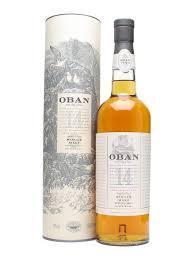Review of Shirah Wines White Hawk Syrah 2012 and Oban 14 year old Single Malt Scotch.
By Joshua E. London and Lou Marmon
Washington Jewish Week January 22, 2015

Though George Washington was a big whisky producer, he actually loved Madeira much more, and typically ordered it by the pipe (126 gallons). Thomas Jefferson remains the best known Presidential oenophile. He amassed a vast cellar which nearly bankrupted him, acquired extensive knowledge of wine, and also developed a critical palate. Jefferson also attempted time and again to establish Virginia as a quality wine producing state.
James Polk’s dinners featured as many as six different wines, including Champagne, Port and Sauternes. Lincoln was personally fairly “dry”, but his wife Mary was one of the first to include domestic wines at White House functions. JFK loved French wines as did Nixon; Tricky Dick reportedly instructed his staff to serve mediocre quality red wine to guests while he drank bottles of Chateau Margaux (guests were served from bottles with towels wrapped around the label to disguise the distinction).
LBJ, who was unsurprisingly mostly a Scotch whisky man, established the general custom that official White House functions serve domestic wines, paving the way eventually for Reagan, who mostly drank California wines, to serve the first Zinfandel at a state affair.
Interestingly, when kosher wines are wanted at the White House, more often than not they have come from Hagafen Cellars of Napa Valley, CA (established in 1979). As big fans of Hagafen, we are loath to suggest alternatives… That said, however, if a more in-your-face, powerful style of domestic kosher wine is desired, we would recommend to the White House sommelier the Shirah Wines White Hawk Syrah 2012 ($55). Made of 98 percent Syrah and 2 percent Viognier sourced from Santa Barbara’s vaunted White Hawk Vineyard, a 60-acre vineyard planted on sand dunes on the south facing slope of Cat Canyon of the Los Alamos Valley about 20 miles west of the Pacific, and farmed using sustainable and primarily organic methods, with typically minuscule yields. This brilliant, absorbing, meaty wine is intense with nice acidity and booming notes of blackberries, blueberries, and mild black pepper with perhaps a touch of cassia or nutmeg, some leafy tobacco, distinct notes of oak, with a long, hearty, drying tannic finish. Craves a bit of flesh.
Spirits-wise, we recently tasted the latest release from the Oban Distillery, nestled in the lovely seaside town of the same name on Scotland’s western shore (Oban means “Little Bay” in Scottish Gaelic). The resort town developed around the distillery, which was established in 1794, making it a small and un-expandable facility. One of us had the good fortune to visit the distillery a while back, and highly recommend it to others—the tour doesn’t take long, given its compact size, but the experience is memorable, the scenery is very pretty, and the town is most inviting.
Part of the Diageo whisky empire, new expressions of Oban don’t come around all that often—but are most welcome. Typically medium-bodied with sweet malty notes and a slightly tangy, salty finish, the Oban 14 year old is one of the featured malts in Diageo’s “Classic Malts” marketing campaign, and remains an actual classic Scotch whisky with a bit of a cult following. This new, non-age-statement offering dos not disappoint:
Oban Little Bay Single Malt Scotch Whisky (43 percent abv; $75): Aged in smaller casks to increase the ratio of wood to whisky to render young spirit more palatable sooner, this is wonderfully soft, supple, and balanced whisky with beautiful aromas and appealing flavors of dried apricot, a briny, sea salt tang, distinct yet distant campfire, toffee, hazelnut, coffee bean, baking spices and brown sugar, and all with a rich and gentle texture. The finish adds a little more fruit and subtle smoke, but dissipates rather quickly—making another sip all too easy and inviting. Really yummy. L’Chaim!
